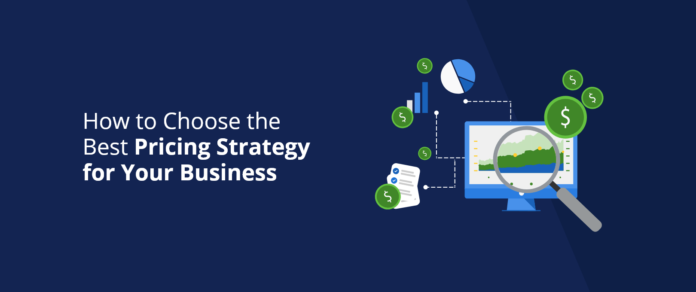Determining the right pricing strategy for your business is crucial for maximizing profits and staying competitive in today’s market. With various factors to consider, such as market conditions, competition, and customer willingness to pay, it’s essential to choose a pricing strategy that aligns with your business goals. In this article, we will explore the concept of pricing strategies and discuss some popular approaches to help you make informed decisions.
Understanding Pricing Strategies:
A pricing strategy refers to the approach taken by business owners to determine the prices of their products or services. It involves considering factors like margins, market conditions, competition, and customer perception. By analyzing these elements, you can set optimal prices that balance profitability and customer value.
Factors Considered in Pricing Strategies:
Market Conditions:
To establish effective pricing, it is crucial to understand the current market conditions. This includes evaluating competitors’ prices and identifying trends and gaps within your industry. By aligning your prices with market expectations, you can position your business for success.
Willingness to Pay:
Assessing the desirability of your offerings and understanding what customers are willing to pay is essential. This involves considering whether your prices are within a reasonable range and if they align with the perceived value of your products or services. Balancing long-term success and short-term high-price sales is a critical aspect of this evaluation.
Competition:
Evaluating your competition is vital for pricing strategies. Identify their strengths and weaknesses and determine how you can differentiate your business. This could involve offering competitive prices, enhancing product quality or quantity, or providing unique deals to attract customers.
Trade Margins:
Analyzing your unit sales price against the unit cost incurred during production helps determine the profitability of your business. This assessment highlights whether price adjustments or changes in production costs are necessary to improve profitability.
Costs Incurred:
Examining the costs incurred throughout the production process, from concept to marketing, is essential. This analysis helps identify areas where cost savings can be achieved, such as sourcing materials at lower prices or optimizing marketing expenses. Adjusting prices accordingly ensures profitability.
Popular Pricing Strategies:
Price Skimming:
Setting initially high prices and gradually reducing them as more competitors enter the market.
Penetration Pricing:
Entering the market with lower prices to attract customers and gradually increasing prices as the business gains traction.
Premium Pricing:
Developing high-quality, high-cost products targeted at customers who value exclusivity and are willing to pay a premium.
Economy Pricing:
Offering affordable, low-cost products targeted at cost-conscious consumers seeking value for money.
Bundle Pricing:
Selling multiple products or services as a package, often at a discounted price, targeting customers seeking bulk discounts.
Value-Based Pricing:
Setting prices based on customers’ perceived value of the product or service, similar to premium pricing.
Dynamic Pricing:
Adjusting prices based on real-time market conditions, demand fluctuations, or other factors affecting supply and demand.
Cost Plus Pricing:
Calculating the cost of production and adding a markup to determine the selling price, ensuring profitability.
Choosing the Smartest Pricing Strategy:
The smartest pricing strategy depends on the unique characteristics and goals of your business. It is essential to select a strategy that aligns with your supply and demand dynamics, customer expectations, and operational capabilities. Implementing a pricing strategy that allows you to charge the highest possible price while providing value to customers is key.
Developing a smart pricing strategy involves considering market conditions, competition, customer preferences, and cost structures. By evaluating these factors, businesses can determine the optimal pricing approach that supports profitability and customer value. Remember, the smartest pricing strategy is the one that best suits your business and allows you to achieve your objectives effectively.

